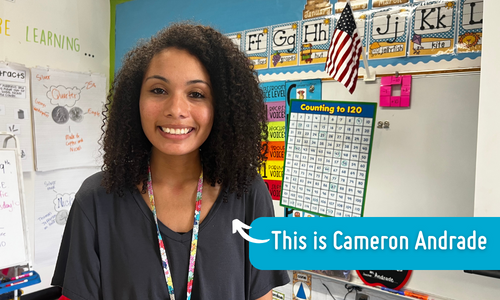Getting learning time back with physical activity

Picture this. It’s 10 a.m. in your classroom and of your 30 students only 10 seem engaged in the lesson you are trying to teach. The other 20 are some combination of bouncing off the walls or falling asleep at their desks. Sound familiar?
Elementary students spend a quarter of their school day distracted. They are unable to focus on their teachers or the assignment they’re working on. That’s according to research from Carnegie Mellon University.
And repeated disruptions in learning can lead to teacher burnout.

The key is to break the cycle of the disruptions instead of trying to power through them. One way to do this is by taking short breaks between focused work sessions. These short breaks lead to more effective time management and increased productivity.
There is a common argument made against taking breaks during learning. The belief is that students will forget what they learn. But research shows that the brain is still very active when it is in its “default mode.” This mode is the state of rest usually associated with taking a break or letting the mind wander.
Techniques like the Pomodoro Technique alternate 25-minute work sessions with five-minute breaks. At the end of four working sessions, they system encourages workers to take a 15-30 minute break.

These systems don’t only work in an office. They can work in all types of settings including classrooms as well.
But it isn’t only about taking short cognitive breaks. Movement is a key component of increasing student productivity and well-being. Physical activity helps get the brain ready to learn. By moving the brain retains information better and for longer periods of time too.
The Daily Mile does both. It’s a 15-minute, physical activity break away from the classroom. After The Daily Mile students come back into the classroom more focused and ready to learn.

Samantha Caruso is a first-grade teacher at Parker Elementary in Galveston, TX. She implemented The Daily Mile into her classroom. After doing The Daily Mile for a few weeks she noticed that her students could focus more.
“Before we started The Daily Mile my students were only able to focus on writing for a couple of sentences. Now they can come back into the classroom and write for about 30 minutes. We started writing books because of The Daily Mile,” she said.

Cameron Andrade is another first-grade teacher at Parker Elementary. She uses The Daily Mile to help break up her long morning of curriculum. She is also able to connect with her students during that time. This allows her to find out if there is something going on with a student. She can then get them the help they need so they can be learning-ready when they come back to class.
Teachers also love the social aspect of The Daily Mile. It allows them to build a classroom culture where students work better together.
Moods also improve with short walks every day. This is because the brain gets a boost when blood flow and circulation increase in the body.
Sign up to try a pilot of The Daily Mile in your class or school.
Use the 21-Day Tracker to log each consecutive time you do The Daily Mile. Keep track of how your students change over time using The Class Evaluation. Do you notice a difference?
Share your experiences in The Daily Mile Community Facebook Group. The forum connects teachers and administrators from Daily Mile schools across the country. It’s a great place to come together to share stories and get some Daily Mile tips and tricks.




